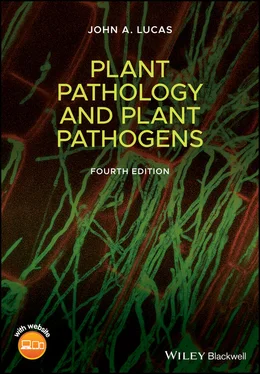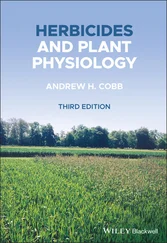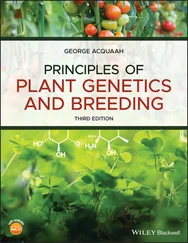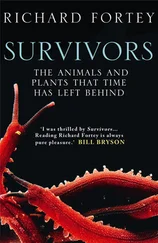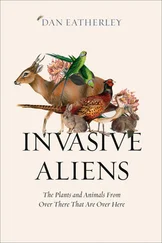1 ...8 9 10 12 13 14 ...19 This discussion has only considered the direct effects of biological, physical, and chemical agents acting independently. In reality, all these agents interact with each other in a more or less complex manner. For instance, infection of the stem base of many crop plants predisposes them to collapse in wind or heavy rain; such lodging then results in problems at harvest. It is difficult to distinguish between the damaging effects of each of these factors. Other interactions are even more complex. The widespread defoliation and death of trees observed in some industrialized countries, a condition known as forest decline, is believed to be due to aerial pollution. However, there is dispute over the relative importance of different atmospheric pollutants and acid rain as contributory factors. It has even been claimed that the premature death of some trees is a normal part of the forest cycle. Most likely, several factors interact to affect tree health, including direct toxic effects, soil acidity, release of toxic ions such as aluminum, and indirect effects on root function, including inhibition of beneficial mycorrhizal fungi and enhanced activity of minor root pathogens. Forest decline provides a good example of a complex disease syndrome, and also illustrates the difficulty of reaching a conclusive diagnosis when several interacting factors are involved.
Significance of Disease
Disease in Natural Plant Communities
It is often assumed that disease outbreaks are less frequent and less severe in wild plant populations than in crops. This is because there are several important differences between natural and agricultural plant communities ( Table 1.3). Wild species are more diverse, both genetically and in the age structure of the population. Hence individual plants will differ in their relative susceptibility to infection. Natural populations also tend to be spatially dispersed as part of a mixed plant community, thereby reducing opportunities for the spread of disease. A recent survey of grassland plots differing in the number of plant species present found that the number of groups of fungal pathogens increased with diversity of the plant community, but that the severity of infection on individual plants decreased. This supports the idea that disease is commonplace in natural plant populations but that mixed communities are less prone to severe disease outbreaks. Often, nutrients are added to crops as fertilizers, and in some cases this can lead to increased susceptibility to infection. Finally, it is likely that plants in natural communities have co‐evolved with their pathogens over long periods of time, leading to some kind of host–pathogen equilibrium. Analysis of wild populations of the genetic model plant Arabidopsis thaliana found very high levels of polymorphism in genes determining recognition of pathogens, supporting the idea that reciprocal selection between host and pathogen over time has maintained a natural diversity for disease resistance. Modern, intensive agricultural systems and the deployment of crops in new areas have disturbed this balance.
In natural ecosystems, disease is one of the many factors which regulate populations ( Figure 1.1) and hence determine the spectrum of species which are successful in any habitat. Pathogens affect the reproduction and longevity of plants and hence act as agents of natural selection. Figure 1.7shows the effect of rust infection on the survival and reproductive capacity of the annual weed groundsel; infected plants produced fewer mature flowers, and hence seeds, and died earlier than uninfected plants. Repeated over several generations, such disease would therefore have a significant effect on population size. There is a practical spin‐off from this observation as some pathogenic fungi may be useful as agents to control weeds, known as mycoherbicides. Experiments in which foliar fungal pathogens were allowed to infect or were excluded from a grassland community by fungicide treatment showed that natural levels of disease reduced the overall biomass of the community, but actually increased biodiversity by reducing the abundance of the most dominant grass species. In particular, disease will tend to limit the spread of species to less favorable geographic regions or habitats, as the impact of pathogens will be greater on plants growing under suboptimal conditions.
Table 1.3 Natural and agricultural plant communities compared
|
Natural |
Agricultural |
| Genotypes |
Diverse |
Uniform |
| Age structure |
Mixed |
Uniform |
| Distribution |
Dispersed |
Crowded |
| Nutrient status |
Often low |
Usually high |
| Co‐evolution span |
Long |
Short |
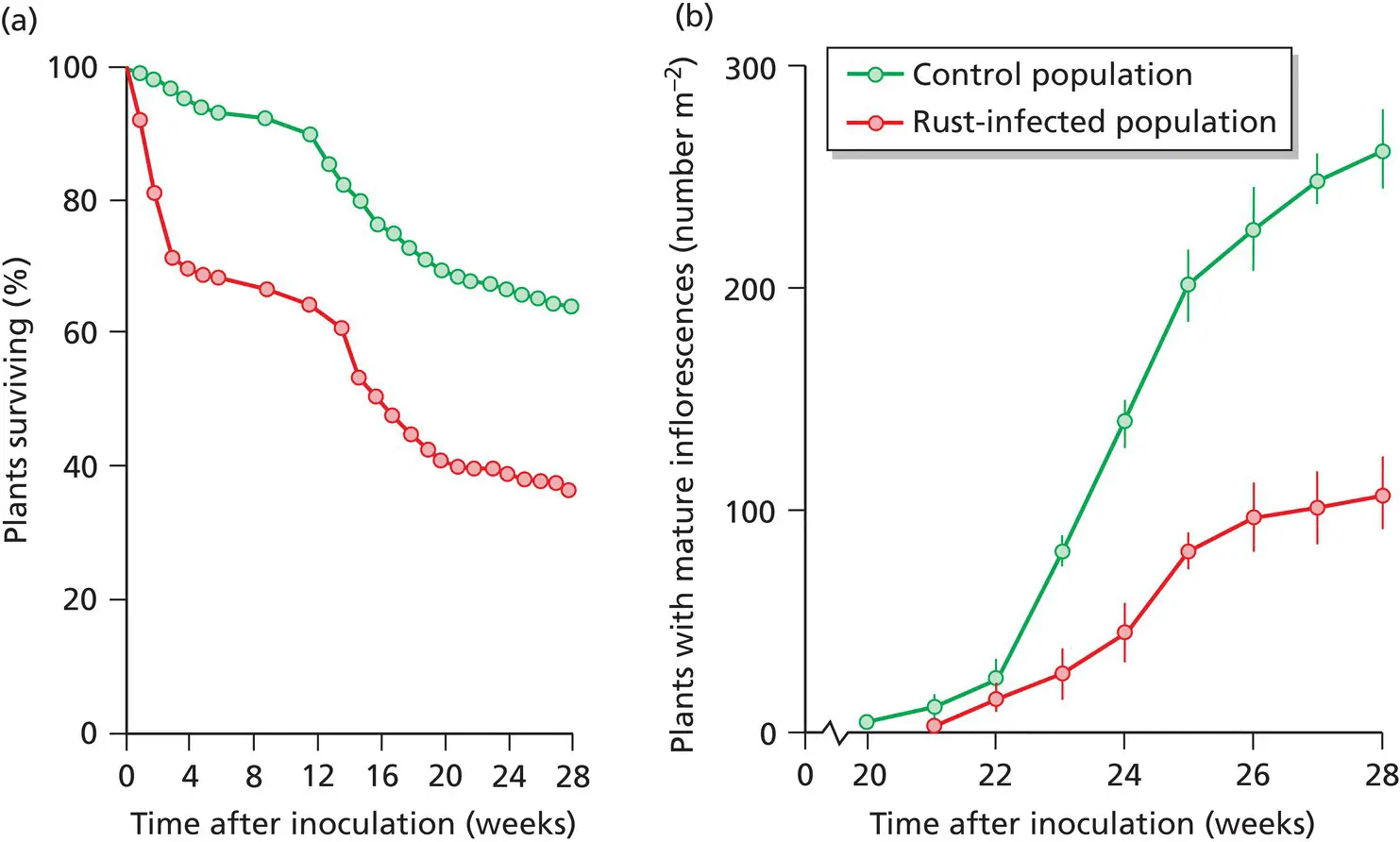
Figure 1.7 Effect of infection by the rust fungus Puccinia lagenophorae on survival and reproduction of the annual weed groundsel ( Senecio vulgaris ). (a) Percentage of the original population surviving in control and rust‐infected populations. (b) Number of mature inflorescences formed by control and rust‐infected plants.
Source: After Paul and Ayres (1986a,b).
Disease may also accelerate change within established plant communities. For example, forest trees may be killed, thereby opening the canopy and allowing regeneration to proceed. The global epidemic of Dutch elm disease ( Table 1.5) completely altered the structure and species composition of woodlands where elm was one of the dominant trees. An even more dramatic example of a disease outbreak in natural vegetation occurred in Australia where the root‐rot pathogen Phytophthora cinnamomi has killed large areas of native forest ( Table 1.5). The unusual feature of this epidemic was that many different species of trees and shrubs were affected by the same pathogen.
One explanation for the severity of such invasive diseases is that the pathogen responsible was almost undoubtedly introduced from another continent, and hence spread through a host population not previously exposed to infection. The term new‐encounter diseasehas been proposed to describe such an epidemic arising from contact between a previously separate host and pathogen.
Disease in Agriculture, Horticulture, and Forestry
In agricultural ecosystems, disease is one of the factors influencing crop yield and quality. Farmers, foresters, and horticulturalists are, by and large, interested only in those changes in crop performance which influence cash return per hectare. The ideal situation, in which pathogens are avoided, excluded or eliminated, is therefore a theoretical rather than practical goal. On the farm, other priorities may prevail; choice of crop or cultivar is usually based on likely profitability, rather than resistance to pests or pathogens. Unless a financial return is guaranteed, control measures may be ignored or reduced in scale. As a consequence, the significance of disease, as perceived by the grower, will depend to a large extent on the market value of the crop. Inputs of chemicals or other actions designed to reduce disease are only justified when the likely impact on yield or quality will outweigh the cost of the measure. Even a possible bonus, such as restricted carry‐over of the pathogen to the following season, may not provide sufficient incentive for any financial outlay.
Other parties with an interest in crop diseases are government advisory or extension pathologists, consultants, and representatives of the agrochemical industry. The relative resistance of new crop varieties to pathogens and the efficacy of commercial formulations of pesticides are assessed by advisory scientists under field conditions; recommendations for use may be based on these field trials. Independent consultants offer growers an overall package of advice for crop management, part of which concerns disease. Agrochemical companies provide information on the performance of their crop protection products, whilst government agencies regulating use of chemicals in the field issue guidelines and can impose restrictions on pesticide application. Nowadays, such advice includes strategies to reduce the risk of resistance developing to different pesticide classes. In recent years, more stringent legislation on the registration and use of agrochemicals, especially in Europe, has led to withdrawal of many crop protection products, and also affected the availability of new pesticides. Hence decisions on disease and pest control are influenced by many factors and often involve compromises driven by economic considerations or the regulatory system.
Читать дальше
